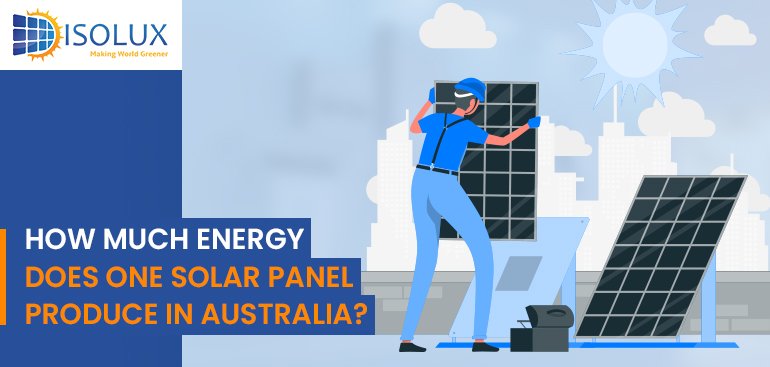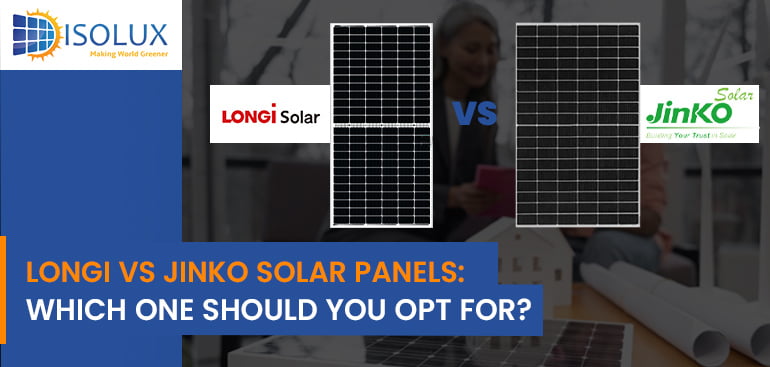In the sun-drenched continent of Australia, harnessing solar energy has become a significant part of the sustainable energy revolution. As more people consider adopting solar power for their homes or businesses, a crucial question emerges: “How much energy does one solar panel produce in Australia?” In this comprehensive guide, we delve into the factors that influence Solar Panel efficiency and tips to optimize the output for maximum benefits.
Energy Production of a One Solar Panel in Australia
The energy production by one solar panel depends on its wattage and efficiency. As mentioned earlier, a standard residential solar panel with a capacity of 300W to 400W can generate approximately 1,200 to 1,600 watt-hours of electricity per day under optimal conditions.
On average, an average-sized solar panel in Australia measures approximately 1.6 square meters and has the capacity to generate around 300 to 370 watts of power per hour when operating under optimal conditions. In a single day, this solar panel can produce approximately 1.2 to 1.48 kilowatt-hours (kWh) of energy.
Calculation of Solar Panel Energy Output
To calculate the energy produced by solar panels in a specific location, you need to consider factors like panel capacity, location, tilt angle, shading, and weather conditions. Online solar calculators can assist you in estimating the potential energy production of your solar panel installation.
Key Points to Consider
Before we dive into the technical aspects of solar panel energy production, it’s essential to understand the two key factors that influence the output of a solar panel:
Sunlight Availability: The amount of sunlight a solar panel receives directly impacts its energy production. Australia is blessed with abundant sunlight, making it an excellent location for solar energy generation.
Solar Panel Efficiency: Different solar panels have varying levels of efficiency in converting sunlight into electricity. High-quality panels with better efficiency can produce more energy with the same amount of sunlight.
Solar Panel Output
The output of a solar panel is measured in watts (W) and kilowatts (kW). A typical residential solar panel in Australia has a capacity of around 300W to 400W. Commercial solar panels can have a higher capacity, ranging from 400W to 600W or more. The higher the panel’s wattage, the more energy it can produce under optimal conditions.
Maximizing Solar Panel Efficiency in Australia
To get the most out of your solar panels in Australia, consider implementing these strategies to maximize their efficiency:
Optimal Placement: Install solar panels on a rooftop or ground location with maximum sunlight exposure throughout the day.
Regular Maintenance: Keep the panels clean and free from debris to ensure optimal energy production.
Upgrading Inverters: Modern inverters with advanced technology can improve the overall efficiency of the solar system.
How to Ensure Your Solar Panels Are Working Efficiently?
Ensuring your solar panels are working efficiently is crucial to maximizing their output and getting the most value from your investment. Here are some practical tips to achieve optimal performance:
1. Regular Inspection and Cleaning
Perform routine inspections to check for any damage, debris, or shading that could hinder the panel’s performance. Cleaning the panels regularly will help maintain their efficiency.
2. Monitoring Your System
Use a solar energy monitoring system to keep track of your panel’s energy production and identify any potential issues promptly.
3. Professional Maintenance
Engage professional solar technicians to conduct regular maintenance and ensure your system operates at peak performance.
4. Responding to Weather Changes
Be aware of weather conditions that could affect your panel’s performance and take necessary precautions during extreme weather events.
5. Optimizing Solar System Setup
If you plan to expand your solar system, consider upgrading your inverter and incorporating advanced technologies to enhance efficiency.
6. Being Energy Efficient
Pair your solar panels with energy-efficient appliances and practices to make the most of your solar-generated electricity.
Understanding Solar Panel Energy Generation
Now that we have covered the key factors and technology behind solar panels let’s delve deeper into understanding how solar panels convert sunlight into electricity.
1. Science Behind Solar Panels
At the heart of solar PV module’s energy production lies the photoelectric effect. When photons from sunlight strike the solar panel’s photovoltaic cells, they excite electrons, creating an electric current. This flow of electrons generates the electricity needed to power homes and businesses.
2. Conversion of Sunlight to Electricity
As sunlight hits the solar panel’s surface, the semiconductor materials absorb the energy, freeing electrons from their atoms. These electrons then flow through the photovoltaic cells, generating a flow of electricity.
3. Maximizing Solar Energy Production
To maximize solar energy production, consider using advanced solar tracking systems that allow panels to follow the sun’s path throughout the day, optimizing their exposure to sunlight.
4. Solar Energy Storage
Excess energy generated by solar panels during sunny days can be stored in batteries for use during cloudy periods or at night when the panels aren’t producing electricity.
5. Environmental Impact
Choosing solar energy over traditional fossil fuels reduces greenhouse gas emissions, helping combat climate change and contributing to a cleaner, greener planet.
Conclusion
Now, you can assess the performance of your solar PV system and make informed decisions to optimize energy production.
If you think your solar panels system is not producing enough energy. Get in touch with Isolux Solar, a leading solar installation company in Sydney. We’ll help you optimize or upgrade your existing solar system.




